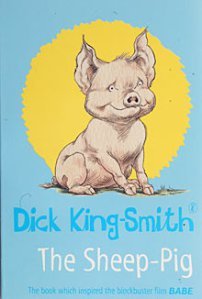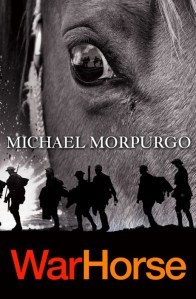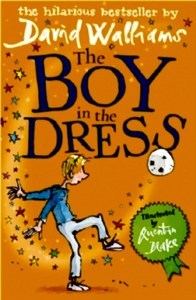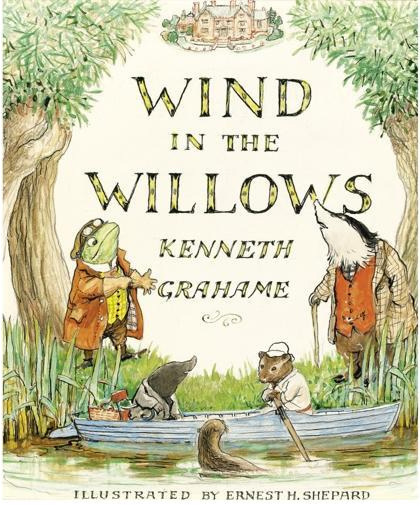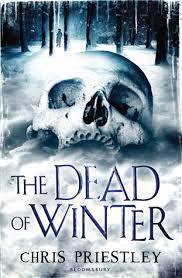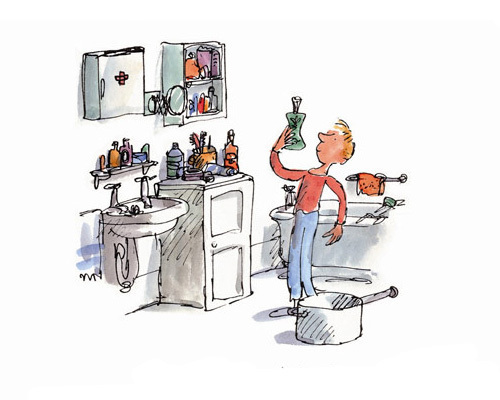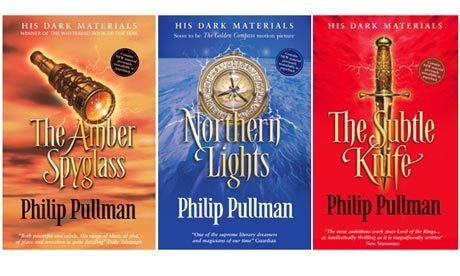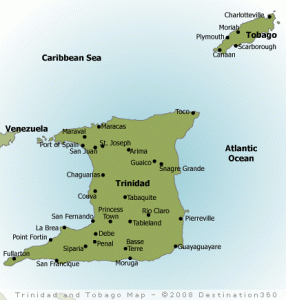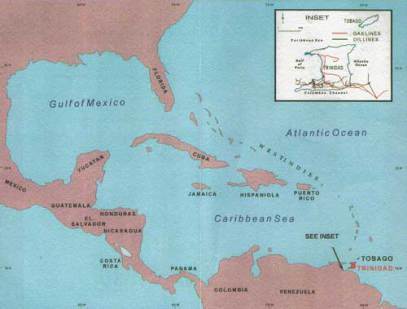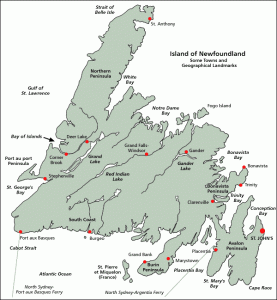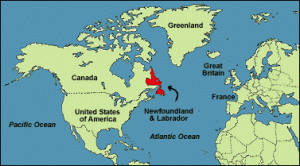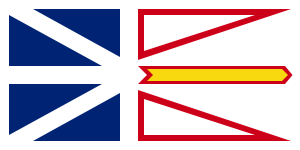Louise M.H. Miller's Blog, page 8
May 26, 2015
A Month of: Children’s Fiction – The Sheep-Pig
The Sheep-Pig
The Sheep-Pig by Dick King Smith is a sweet story about a pig who becomes a sheep-pig which unknowingly for him saves his bacon (literally). The story is well known and has been brought to the big screen in the film entitled Babe: The Sheep-Pig.
The story is lovely as is the message, asking nicely and treating others with respect to all work together to achieve a goal.
The story is also well written and a joy to read on your own or together with children and parents. A book suitable for all ages, especially for younger readers who will thoroughly enjoy doing the voices of the sheep characters.
Very good indeed.
Filed under: Uncategorized Tagged: babe, children's books, children's fiction, Dick King-Smith, morals, sheep dog, the sheep pig


May 22, 2015
A Month of: Children’s Fiction – My Best Reads – War Horse
War Horse by Michael Morpurgo
A very good, well written story, but incredibly sad. The strong emotional story line makes it a read for older children, rather than younger readers because of the subject matter alone. The story is well written and easy to follow for children, and is told wonderfully through the point of view of Joey, rather than his owners, as it is more in the recently made film.
Joey finds himself taken from his home farm and sold to the army to be taken to the Western Front during the First World War. Michael Morpurgo opens our eyes to an element of the war that tends to be overlooked – the role played by the thousands of horses taken into France. Here we see through Joey’s eyes the horrors of the front line in France in 1914 and onwards. But like the soldiers around Joey, we are in awe at his strength of character and courage.
Visit Michael Morpurgo’s beautiful website for more information on War Horse and his other novels at www.michaelmorpurgo.com
Filed under: Uncategorized Tagged: children's books, children's fiction, First World War, france, horse, Michael Morpurgo, war, War Horse, Western Front


May 18, 2015
A Month of: Children’s Fiction – My Best Reads – The Boy in the Dress
The Boy in the Dress by David Walliams
This is a surprisingly charming debut novel by the Little Britain star, David Walliams. The Boy in the Dress has huge amounts of child appeal being charming and funny, with school life that children will be able to relate too. It is a heart-warming story of a boy who comes to school dressed as a girl and the reactions of his friends and family. Walliams takes a light-hearted approach to the subject matter which gives it it’s charming appeal.
A very good read, well written and with the help of wonderful illustrations from Quentin Blake. A thoroughly enjoyable read. Heart-warming and hilarious.
Filed under: Uncategorized Tagged: children's books, children's fiction, david walliams, little britain, quentin blake, the boy in the dress


May 15, 2015
A Month of: Children’s Fiction – My Best Reads – The Wind in the Willows
The Wind in the Willows by Kenneth Grahame
First published in 1908 it has enchanted its readers for over a century, and is still a strong and popular favourite to this day.
This is one of those books that I can never remember reading but always assumed I had because I knew the story so well. And I probably did read it as a child – I mean I must have done right? But anyway.
The Wind in the Willows is such a classic tale that everyone should have read it. It is so completely brilliant for adults and children alike. The story and the writing is so superb, it is a joy to read. You follow the glorious adventure of Mole, Ratty, Badger and Toad in this enchanting story. A real must. A sentimental British favourite and classic.
Filed under: Uncategorized Tagged: british classic, children's books, children's fiction, edwardian england, kenneth grahame, the wind in the willows, toad of toad hall


May 12, 2015
A Month of: Children’s Fiction – My Best Reads – The Dead of Winter
The Dead of Winter by Chris Priestley
I’m not really a fan of horror. I read the occasional Stephen King or Dean Koontz but that’s about it, and I never ever watch anything even remotely spooky. But I was still surprised how much this book scared me.
It is seriously yet delightfully spooky for a children’s book. Priestley creates the spooky, creepy atmosphere so well, you feel your heart racing along with the main character’s. Every little detail is so well thought out and adds to the creation of a terrifying atmosphere – not an easy thing to do.
The story itself is exciting, and you want to rush through to the end to see how it all ends. You want to work out the mystery behind the desolate country house where Michael finds himself living after the death of his mother.
A great read, but perhaps not for younger readers, or at least for readers braver than me!!
Filed under: Uncategorized Tagged: children's books, children's fiction, chris priestley, ghost stories, ghosts, haunted house, horror, horror stories, supernatural, the dead of winter


May 7, 2015
A Month of: Children’s Fiction – My Best Reads – Artemis Fowl
ArtemisFowl��by Eoin Colfer
Artemis Fowl is a billionaire, genius and criminal mastermind, and still at school.
A fantastic creation by Colfer. Well written and well paced, an interesting concept and a great and likeable anti-hero character in Artemis Fowl. Criminal mastermind yes, but we’re with him all the way, wanting to fight his corner, and well simply be as smart as he is.
A great read in its own right, and what’s better it’s one of many in a cracking series.
Filed under: Uncategorized Tagged: artemis fowl, children's books, children's fiction, Eoin Colfer, great reads


May 5, 2015
A Month Of: Children’s Fiction – My Best Reads – Roald Dahl
My ‘a month of’ best reads of children’s fiction would be incomplete without a mention to the great Roald Dahl. His stories are loved by children and adults alike through the world and many have been made into blockbuster movies.
Read as a child, I recently read a couple of Roald Dahl books again and I found that I loved them just as much, and they are one of many books I will be buying when we decide to start a family. They are simply a must for every child’s bookshelf. (Or you could borrow them from your local library).
Writing for children is notoriously difficult by Roald Dahl manages it with ease.
Charlie and the Chocolate Factory
This best loved story has come to the silver screen several times, but I haven’t read it for a long time, and I wasn’t disappointed. In fact it’s much better than the movies. I’m not going to say much but I am going to quote one ‘song’ for Mike Teavee, of which I have already blogged, but it’s so great that’ll I’ll post it again.
The Song for Mike Teavee
���The most important thing we���ve learned,
So far as children are concerned,
Them near your television set ���Is never, NEVER, NEVER let
Or better still, just don���t install
The idiotic thing at all.
In almost every house we���ve been,
We���ve watched the gaping at the screen.
They loll and slop and lounge about,
And stare until their eyes pop out.
(Last week in someone���s place we saw
A dozen eyes on the floor.)
They sit and stare and stare and sit
Until they���re hypnotized by it,
Until they���re absolutely drunk
With all that shocking ghastly junk.
Oh yes, we know it keeps them still,
They don���t climb out the window sill,
They never fight or kick or punch,
They leave you free to cook the lunch
And wash the dishes in the sink ���
But did you ever stop to think,
To wonder just exactly what
This does to your beloved tot?
IT ROTS THE SENSES IN THE HEAD!
IT KILLS IMAGINATION DEAD!
IT CLOGS AND CLUTTERS UP THE MIND!
IT MAKES A CHILD SO DULL AND BLIND
HE CAN NO LONGER UNDERSTAND
A FANTASY, A FAIRYTALE!
HIS BRAIN BECOMES AS SOFT AS CHEESE!
HIS POWERS OF THINKING RUST AND FREEZE!
HE CANNOT THINK ��� HE ONLY SEES!
���All right!��� you���ll cry. ���All right!��� you���ll say,
What shall we do to entertain���
But if we take the set away,
Our darling children! Please explain!���
We���ll answer this by asking you,
���What used the darling ones to do?
How used they keep themselves contented
Before this monster was invented?���
Have you forgotten? Don���t you know?
We���ll say it very loud and slow:
THEY���USED���TO���READ! They���d READ and READ,
AND READ and READ, and then proceed
TO READ some more. Great Scott! Gadzooks!
One half their lives was reading books!
The nursery shelves held books galore!
Books cluttered up the nursery floor!
And in the bedroom, by the bed,
More books were waiting to be read!
Such wondrous, fine, fantastic tales
Of dragons, gypsies, queens, and hales
And treasure isles, and distant shores
Where smugglers rowed with muffled oars,
And pirates wearing purple pants,
And sailing ships and elephants,
And cannibals crouching round the pot,
Stirring away at something hot.
(It smells so good what can it be?
Good gracious, it���s Penelope.)
The younger ones had Beatrix Potter
With Mr Tod, the dirty rotter,
And squirrel Nutkin, Pigling Bland
And Mrs Tiggy-Winkle and ���
Just How The Camel Got His Hump,
And How The Monkey Lost His Rump,
And Mr Toad, and bless my soul,
There���s Mr Rat ad Mr Role ���
Oh, books, what books they used to know,
Thos children living long ago!
So please, oh please, we beg, we pray,
Go throw your TV set away,
And in its place you can install
A lovely bookshelf with lots of books,
Ignoring all the dirty looks,
The screams and yells, the bites and kicks,
And children hitting you with sticks ���
Fear not, because we promise you
That, in about a week or two
Of having nothing else to do,
They���ll now begin to feel the need
Of having something good to read.
And once they start ��� oh boy, oh joy!
You watch the slowly growing joy
That fills their hearts. They���ll grow so keen
They���ll wonder what they���d ever seen
In that ridiculous machine,
That nauseating, foul, unclean.
Repulsive television screen!
And later, each and every kid
Will love you more for what you did.
P.S. Regarding Mike Teaevee,
We very much regret that we
Shall simply have to wait and see
If we can get him back his height.
But if we can���t ��� it serves him right.���
George’s Marvellous Medicine
Now I can’t remember actually reading this one as a child – I have got a feeling that I probably will have done but I couldn’t really remember. This is wonderfully silly. I loved reading this and found it very funny (and silly). This will definitely be super popular with children. A definite must if you love a silly, well-written read.
The BFG
The BFG is one of my favorites. I love the way Dahl writes the BFG’s speech, and it is a lovely idea about the nature and origin of dreams. As a child when I read it I so wanted to be Sophie (not an orphan obviously) but being friends with someone wonderfully interesting as the BFG himself and being a part of his strange world and helping him collect dreams. Simply wonderful.
Filed under: Uncategorized Tagged: Charlie and the Chocolate Factory, children's fiction, george's marvellous medicine, mike teavee, quentin blake, reading, Roald Dahl, sophie, the bfg


May 1, 2015
A Month of: Children’s Fiction – My Best Reads
As mentioned yesterday, the start of May heralds a new ‘a month of’ blog theme, which is of course today. My theme for the month of May being ‘best reads for children’.
His Dark Materials Trilogy by Philip Pullman
The Northern Lights
The Subtle Knife
The Amber Spyglass
This trilogy is wonderful and well deserves its place as number three (third only to the equally brilliant The Lord of the Rings, but somewhat disappointingly to Jane Austen’s Pride and Prejudice) in 2003’s BBC Big Read��as voted by the public.
[Somewhat controversial in the States, perhaps primarily due to its anti-religious tone, the series has done well in Britain.]
Some children’s books can be read equally as enthusiastically by adults and by children – this series is most definitely one of them. With its complexity and depth of levels and layers the books are a treasure trove of thoughts and ideas worthy for discussion for any book club, all wrapped up in the seemingly innocent world of a children’s adventure.
For kids there’s likeable kids characters, in Lyra and Will rebellious and brave, there’s adventure and peril, and there’s the discovery of friendship and loyalty. [Whilst being dark enough for adults to appreciate.]
I would recommend this read for older children – each book is pretty long as children’s books go and there is some very real peril which younger children may find disturbing, and who may find the story line too complex to follow or appreciate.
As for boys or girls, I think that Philip Pullman has managed to create a series which both girls and boys can equally enjoy: the developing friendship between Lyra and Will and the central character predominantly a girl, set against intense peril and battle scenes and fantasy world (and death).
I would give the entire series, which in my opinion gets better and better as the trilogy progresses, a well deserved and rare [for me to give] 5/5.
Simply brilliant. Pullman’s genius to create these worlds is outstanding.
Filed under: Uncategorized Tagged: bbc big read, children's fiction, controversial books, dust, his dark materials, junior fiction, philip pullman, the amber spyglass, the northern lights, the subtle knife


April 30, 2015
A Month of: Brief Histories of British Empire Territories – Trinidad and Tobago
The month of April is very almost over, and I’m here to blog my last ‘month of brief histories’ post today – this time a very brief history of Trinidad and Tobago. I’m keeping with the theme of a ‘month of’, so keep your eyes peeled for my first post of my next ‘a month of’ theme tomorrow!
Trinidad and Tobago
Trinidad
From the time of Columbus in 1498, Trinidad was originally a Spanish colony until the arrival in 1797 of eighteen warships of the British fleet.
Tobago
The colonial history of Tobago was more unsettled than that of Trinidad, changing hands several times between Spanish, British, French, Dutch and Courlander colonizers.
Trinidad and Tobago
The two islands, of which Trinidad was the larger, with 94 per cent of the total area, and the most populous with 96 per cent of the total population, were both ceded to the British in the Treaty of Amiens in 1802.
Originally a sugar cane economy, this was transplanted with cocoa and in turn with petroleum, which ultimately came to dominate the economy. In a bid to compensate for the loss of labour brought about due to the abolition of the slave trade, the plantation owners turned to other sources for ���economical��� labour. This came in the form of Chinese and free West African labour, as well as indentured servants from India (from 1845 onwards). By 1857 over half of the 14,000 strong workforce that travelled in the first wave of ���internal migrations within the empire���, were from China and India.
The United States had an air base on the island of Trinidad during the Second World War. The post-war era witnessed the rapid wave of decolonisation spreading throughout the British Empire. In 1958 Trinidad and Tobago and well as its neighbours were banded together to form the short lived West Indies Federation. The vehicle towards independence was put into gear. Independence was granted in 1962. The islands split ties with the British monarchy in 1976, electing to become a republic, but remaining linked to Britain itself within the Commonwealth.
Filed under: Uncategorized Tagged: British Empire, British history, commonwealth, tobago, Trinidad, West Indies Federation 

April 27, 2015
A Month of: Brief Histories of British Empire Territories – Newfoundland
Newfoundland
Newfoundland has strong claims to be the longest serving British Empire colony. Evidence exists that fishermen knew of the existence of Newfoundland and her rich fishing ground before Columbus formally discovered it in 1492.
Newfoundland was claimed by John Cabot for England and for the Crown in 1497. It was reclaimed by Sir Humphrey Gilbert who intended to exploit the regions��� natural resource of fishing rather than using the land for settlement.
In 1610 an attempt was made to form a permanent settlement on Newfoundland, however after it did not prove to be as profitable as the investors would have liked many abandoned the settlement. Some did stay on in Newfoundland to form the first European settlement. The settler���s at Cupid���s Cove had been supplied with ���muskets, spades, mattocks, scythes, cheeses, barrels of ���Irish beef��� and pork, a Bible and a book on ���the General practice of physick��� ���. The settler���s clearly wanted to make a good go of it.
Tensions between Britain and France during the seventeenth and eighteenth centuries were rocky at best and increased when the French colonized the St Lawrence waterways. To get to their new territory, the French had to pass close by Newfoundland. Tensions increased resulting in the Seven Years War which saw the banishment of France from Canada.
Newfoundland had long attracted British fishermen into the Atlantic, it was however, natural, easier to reach the fishing grounds from the new colonies in America, and so the fishing industry off the coast of Newfoundland benefitted New England as well as the old.
Newfoundland remained a loyal colony throughout the twentieth century, for example during the First World War the region suffered the highest casualty rate per population than any other of the participants, the 1st Newfoundland Regiment, for example, suffered a staggering 90% casualty rate on the first day of the Battle of the Somme alone. The survivors went on to serve in subsequent battles and were awarded with the prefix ���Royal��� to the Regiments name.
It remained independent from Canada as they had little in common.
Economic hardships brought about by the 1930s depression forced Newfoundland to go bankrupt. Economic hardships alongside government corruption and political dissatisfaction led to the end of responsible government after a mob of 10,000 attacked the Colonial Building in 1931, forcing the Prime Minister to flee. He lost the election later on in the year. The next government as a result called upon Britain to take more direct control. In 1934 the Commission of Government took control suspending Newfoundland���s self-sustaining status. It remained a dominion in name only.
British officials went to Newfoundland to try and fix the nations finances, but the task proved difficult with the war debt and the cost of the railway increasing it created an unstable government debt/
The Second World War saw Newfoundland being used as a strategic position with the Allies building military bases and especially during the Battle of the Atlantic.
However, the Second World War highlighted Newfoundland���s dire financial state. An economy recover did however occur with the infusion of American money around Newfoundland���s military, naval and air bases and well as her fisheries.
America stepped in to defend the colony in the post-war period, after the political status debate reopened. The island ���bit the bullet��� and applied to join the Canadian Federation.
James, Lawrence, The Rise and Fall of the British Empire��page 44
Filed under: Uncategorized Tagged: British Empire, British history, Canada, Canadian Federation, John Cabot, Newfoundland, St Lawrence 

Louise M.H. Miller's Blog
- Louise M.H. Miller's profile
- 18 followers


